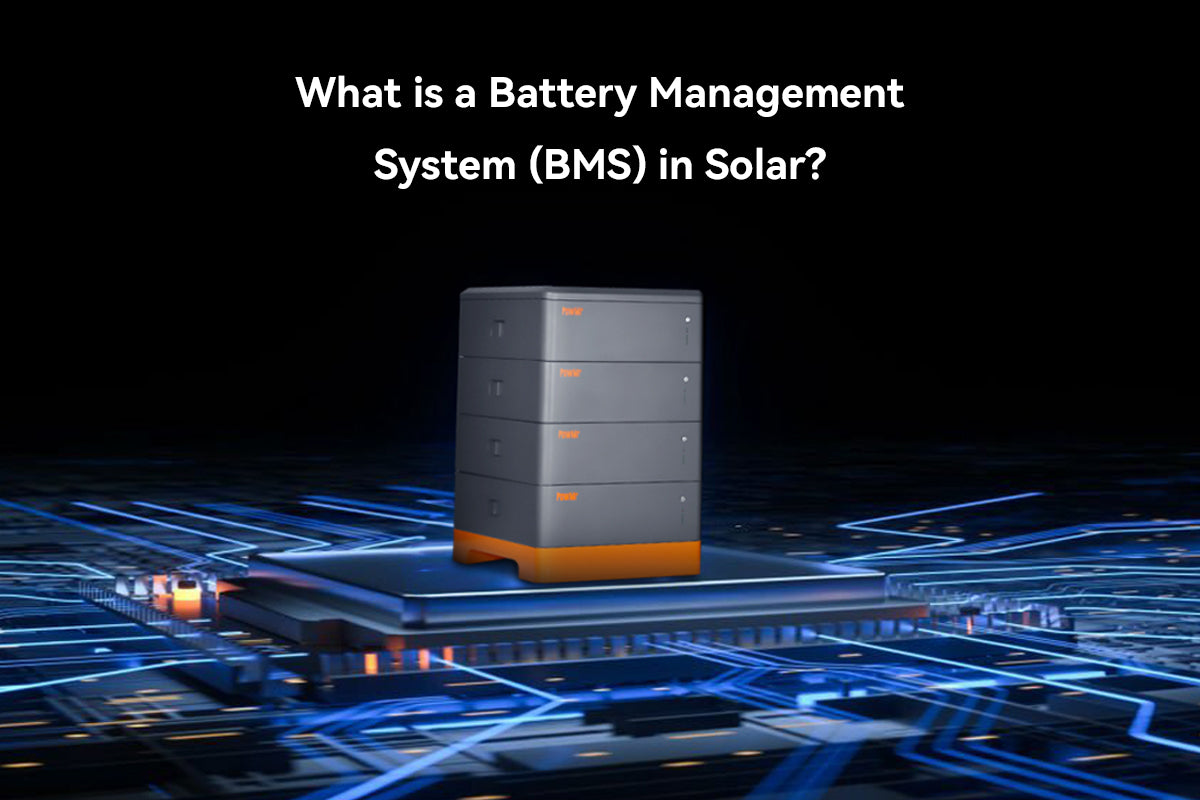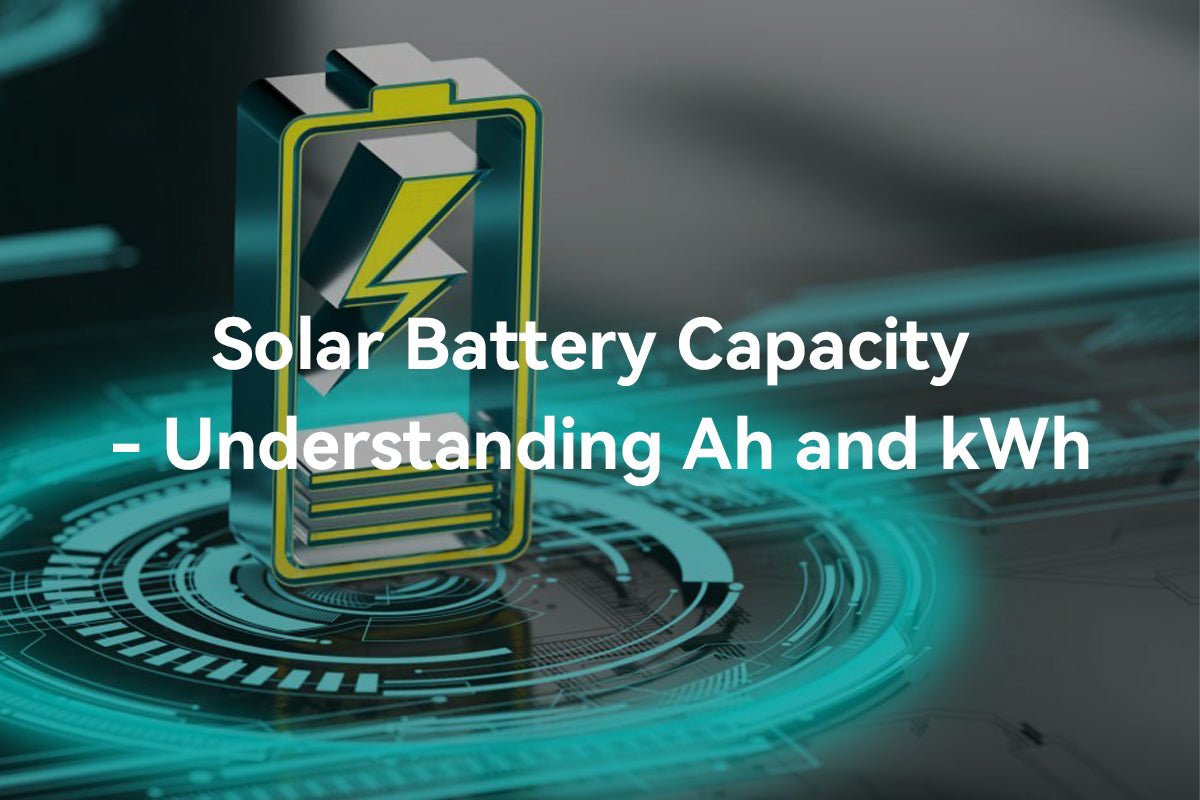In the ever-evolving landscape of solar power systems, the Battery Management System (BMS) plays a pivotal role in ensuring efficiency, longevity, and safety.
This guide delves into the pivotal role of a BMS in solar applications, elucidates its functions, offers key insights for selecting the ideal BMS for your solar energy system, and recommends an excellent stackable LiFePO4 battery with a BMS.
- Why is a Battery Management System Needed?
- What is a battery management system
- What Does a Battery Management System Do in Solar?
- How to Choose a BMS for Your Battery?
- Integration of BMS in Solar - PowMr POW-LIO51400-16S Stackable LiFePO4 Battery
- A Video Guide on How BMS Interacts with Solar Inverters
What is a Battery Management System
A Battery Management System (BMS) is a crucial device used to monitor, regulate, and safeguard rechargeable battery packs. It actively manages individual cells within the battery, ensuring optimal performance and longevity.
BMS can be internal, integrated into the battery pack, or external, separate from the pack. Internal BMS is common in consumer electronics, while external BMS is used in electric vehicles and larger energy storage systems. Both types play a vital role in enhancing battery life, preventing overcharging, balancing cells, and safeguarding against overheating or excessive discharging.
Why is a Battery Management System Needed?
In the dynamic landscape of solar energy utilization, the Battery Management System (BMS) emerges as a crucial player, orchestrating the harmony within solar power systems. Its functions extend beyond mere oversight, delving into the realms of protection, monitoring, and communication.
Battery Protection
The primary function of a BMS lies in safeguarding the battery. It prevents overcharging and over-discharging, ensuring that the battery operates within optimal parameters. This protection mechanism is vital for extending the life of the battery and maintaining its performance over time.
Battery Monitoring
A BMS constantly monitors the battery's vital signs, such as voltage, current, and temperature. This real-time monitoring allows users to stay informed about the battery's condition, enabling proactive measures in case of irregularities. By providing crucial data, the BMS empowers users to make informed decisions regarding their solar power systems.
Communication
Facilitating communication between components is another key role of the BMS. It ensures seamless interaction between the battery, solar panels, and other system elements. This communication capability enhances the overall efficiency of the solar power system by optimizing energy flow and distribution.
What Does a Battery Management System Do in Solar?
To comprehend the role of a Battery Management System in solar applications, it is essential to delve deeper into its specific functions.
Protection Functions
-
Voltage Protection
The BMS safeguards the battery by preventing voltage from exceeding safe limits, mitigating the risk of damage. -
Current Protection
It monitors and regulates the current flowing in and out of the battery, preventing issues like overcharging or excessive discharging. -
Overcharge and Overdischarge Protection
The BMS prevents the battery from being overcharged or overdischarged, maintaining optimal operating conditions. -
Short Circuit Protection
Protection against short circuits is a critical safety feature, preventing potential hazards.
Balancing Batteries
By managing and equalizing the voltage of each battery to ensure the overall health and performance of the battery bank, the BMS contributes to the maximization of both efficiency and lifespan of the entire battery system. This ensures that the energy storage solution operates optimally, delivering reliable and sustained performance over an extended period.
State of Charge (SoC) Management
The BMS accurately determines the
Temperature Regulation
Monitoring and regulating the temperature of the battery cells is a critical function of the BMS. By preventing extreme temperature conditions, the BMS safeguards the battery from potential damage and degradation.
Fault Detection and Diagnostics
A BMS continuously monitors the battery for any faults or abnormalities. In case of a malfunction, the BMS can isolate the problematic section, preventing the entire system from being compromised. Additionally, it provides diagnostic information that aids in troubleshooting and maintenance.
Data Logging and Reporting
The BMS keeps a log of key performance metrics and events, providing a historical record of the battery's behavior. This data is valuable for analyzing long-term trends, identifying patterns, and making informed decisions regarding system optimization.
How to Choose a BMS for Your Battery?
Selecting the right Battery Management System is crucial for maximizing the efficiency and lifespan of your solar energy system. Here are key considerations to keep in mind.
Compatibility of Battery Chemistry
Ensure that the BMS is compatible with the specific battery chemistry used in your solar energy system. Whether it's lithium-ion or LiFePO4, choosing a BMS that aligns with your battery type is essential for optimal performance.
Scalability
Consider the scalability of the BMS. As your solar power system grows, the BMS should be capable of accommodating batteries capacity. Scalability ensures flexibility and future-proofing for potential expansions.
Communication Protocols
BMS and solar inverters communicate using standardized communication protocols such as Modbus or CAN (Controller Area Network). These protocols enable the exchange of vital information, allowing the solar inverter to adjust its operations based on the real-time status of the batteries.
Verify that the BMS supports communication protocols compatible with your solar inverter. Compatibility with industry-standard protocols ensures smooth communication between components, enhancing overall system efficiency.
Volttage and Current
Determine the maximum voltage and current ratings supported by the BMS. This information is critical for ensuring that the BMS can handle the specific requirements of your solar battery, preventing overloading and potential system failures.
Integration of BMS in Solar - PowMr POW-LIO51400-16S Stackable LiFePO4 Battery
Building on the importance of the factors mentioned above, the PowMr POW-LIO51400-16S emerges as an excellent choice for a Battery Management System in solar applications.
-
Integrated LiFePO4 BMS
The PowMr POW-LIO51400-16S comes with an integrated LiFePO4 BMS, ensuring compatibility and optimal performance for LiFePO4 battery chemistry. -
Scalability
With a capacity of 51.2V 100Ah per battery, the PowMr system allows for parallel communication for up to 16 batteries. This scalability makes it a versatile solution for varying energy needs. -
Communication with inverter of most brands
The PowMr POW-LIO51400-16S supports communication protocols compatible with most brands of inverters. This ensures seamless communication and coordination within the solar power system.
| Inverter Brand | Communication Method | Inverter Communication Pin | Battery Communication Pin |
|---|---|---|---|
| PowMr | RS485 | PIN7 : RS485A PIN8 : RS485B |
PIN2 / 7 : RS485A PIN1 / 8 : RS485B |
| SMA | CAN | PIN4: CANH PIN5 : CANL |
PIN4: CANH PIN5 : CANL |
| VICTRON | CAN | PIN7 : CANH PIN8 : CANL |
PIN4: CANH PIN5 : CANL |
| Growatt | RS485 | PIN7 : RS485A PIN8 : RS485B |
PIN2 / 7 : RS485A PIN1 / 8 : RS485B |
| GOODWE | CAN |
PIN4: CANH PIN5 : CANL |
PIN4: CANH PIN5 : CANL |
| PYLONTECH | RS485 | PIN7 : RS485A PIN8: RS485B |
PIN2 / 7 : RS485A PIN1 / 8 : RS485B |
| LUXPOWER | RS485 | PIN2 RS485A PIN1 RS485B |
PIN2 / 7 : RS485A PIN1 / 8 : RS485B |
| Voltronic Power | RS485 | PIN5 RS485A PIN3 : RS485B |
PIN2 / 7 : RS485A PIN1 / 8 : RS485B |
| SOFAR | CAN | PIN1 : CANH PIN2 : CANL |
PIN4: CANH PIN5 : CANL |
| SRNE | RS485 | PIN7 : RS485A PIN8 : RS485B |
PIN2 / 7 : RS485A PIN1 / 8 : RS485B |
| Deye | RS485 CAN |
PIN4: CANH PINS : CANL |
PIN4 : CANH PIN5 : CANL |
| MEGAREVO | CAN | PIN4: CANH PIN5 : CANL |
PIN4: CANH PIN5 : CANL |
| MUST | CAN | PIN4: CANH PIN5 : CANL |
PIN4: CANH PIN5 : CANL |
Tips: This battery and another high-voltage battery on our website, are both available for pre-order. Feel free to contact us for further details.




Leave a comment
เว็บไซต์นี้ได้รับการคุ้มครองโดย reCAPTCHA และมีการนำนโยบายความเป็นส่วนตัวของ Google และข้อกำหนดในการใช้บริการมาใช้